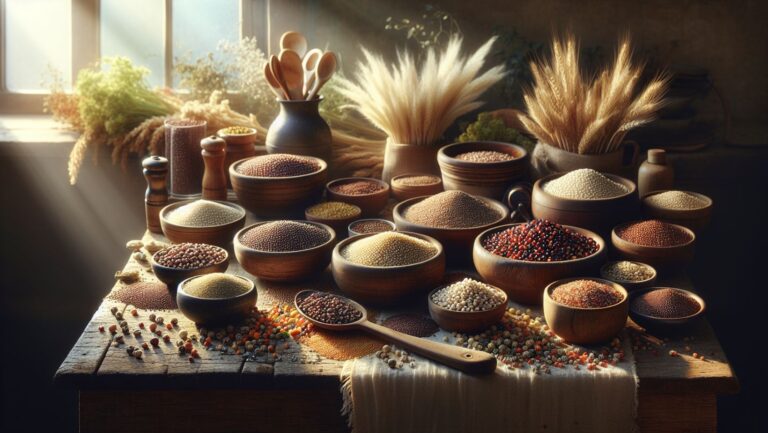Ever wondered if there’s a secret to unlocking a more nutritious and delicious diet? Look no further than ancient grains. These time-tested treasures have been nourishing civilizations for thousands of years. Delve deeper and discover the wonders of ancient grains in this article.
We’ll explore what makes them unique, unlock their potential health benefits, and guide you through the exciting world of incorporating them into your meals. By the end, you’ll know more about ancient grains and how they can transform your approach to healthy eating.
Understanding Ancient Grains
Ancient grains are varieties that have changed little over hundreds of years. This group includes quinoa, amaranth, millet, teff, and spelt. These grains differ from modern, processed grains because they are usually consumed in their whole form, preserving their bran and germ. This means they keep their critical nutrients and fiber intact.
Another fascinating aspect of ancient grains is their resilience. Many of these grains, such as millet and sorghum, are naturally drought-resistant and can grow in harsh conditions. This adaptability has allowed them to sustain populations in diverse regions around the world. By incorporating these grains into our diets, we not only benefit from their nutritional properties but also support agricultural diversity and food security.
The term “ancient grains” is somewhat misleading, as it doesn’t refer to the age of the grains themselves but rather to the fact that they have remained largely unchanged over the last several hundred years. Unlike modern wheat, which has undergone extensive hybridization and modification, ancient grains are closer to their original form. This means they have retained their nutritional value and unique flavor profiles, offering a glimpse into the diets of our ancestors.
Nutritional Advantages
Adding ancient grains to your diet can significantly increase its nutrient content. These grains contain abundant dietary fiber, antioxidants, protein, iron, and magnesium. Eating these grains regularly can help support heart health, enhance digestive health, and regulate blood sugar levels. This is especially valuable for people with diabetes. Their high fiber levels can also help you stay full, aiding in weight management.
The protein found in ancient grains is also noteworthy. Quinoa, for example, is one of the few plant-based sources of complete protein, containing all nine essential amino acids. This makes it an excellent option for vegetarians and vegans looking to ensure adequate protein intake. Additionally, the slow-release carbohydrates in ancient grains provide sustained energy throughout the day, making them a great choice for active individuals.
Incorporating Ancient Grains into Meals
Introducing ancient grains into your routine is simple and can add excitement to your meals. Start your day with a hearty bowl of amaranth porridge topped with fruit and nuts. For lunch or dinner, substitute quinoa for rice or pasta in salads or as a side dish. If you enjoy baking, try using spelt or teff flour for a nutritional boost and a new flavor twist in your bread recipes.
When cooking ancient grains, it’s essential to rinse them thoroughly before use, particularly quinoa, which has a natural coating called saponin that can taste bitter. Most grains can be cooked using the absorption method, similar to cooking rice, with a ratio of one part grain to two parts liquid. Experiment with different grains and recipes to find your favorites, and don’t be afraid to get creative with seasonings and add-ins like herbs, spices, and roasted vegetables.
Benefits of Ancient Grains for Pets
Some ancient grains can also benefit your pets. When cooked, grains like quinoa are an excellent protein source for dogs and cats, promoting muscle development and energy. You can add cooked quinoa to your pet’s regular meals or use them in homemade treats. Remember to consult your vet before introducing new foods to your pet’s diet.
Global Culinary Inspirations
The widespread use of ancient grains invites a journey through global cuisines. In South America, quinoa has been essential for centuries before gaining international recognition. Teff is used in the classic spongy flatbread known as injera in Africa. Exploring these and other global dishes brings not only health benefits but also an appreciation for the world’s diverse food cultures.
Embracing ancient grains enriches your diet not just nutritionally but also culturally. These grains connect us to past traditions and contribute to a sustainable, healthful eating pattern suitable for both humans and pets alike.



